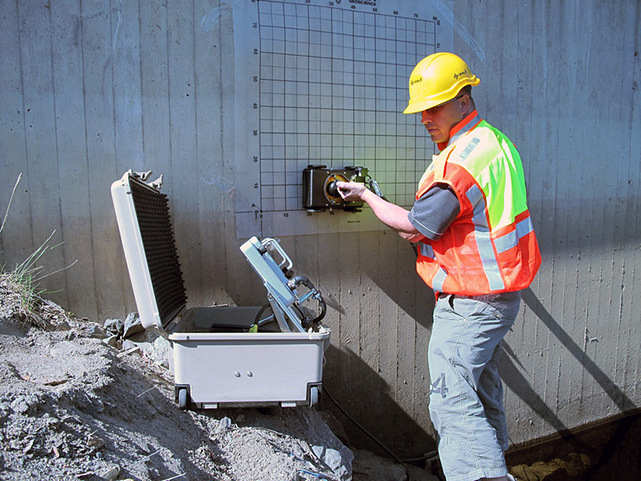Introduce the Transformative Power of Concrete Scanning in Making The Most Of Efficiency and Safety
Concrete scanning has actually emerged as an essential tool in the building and construction industry, using exceptional advantages in enhancing project performance and ensuring security requirements. The transformative power of concrete scanning lies in its capability to supply thorough understandings and real-time information, changing exactly how tasks are intended and executed.
Significance of Concrete Scanning
Making certain the structural integrity and safety and security of building tasks begins with the critical action of carrying out extensive concrete scanning. Concrete scanning is a non-destructive approach utilized to identify and map subsurface elements within concrete structures.
The importance of concrete scanning can not be overstated, as it plays an essential function in protecting against mishaps, reducing task delays, and making sure the long-term longevity of the building. By recognizing possible risks before the construction stage starts, building contractors can execute proper security measures and make informed decisions relating to the layout and implementation of the task. Furthermore, concrete scanning aids in optimizing job timelines and spending plan by staying clear of unforeseen prices and hold-ups that might occur because of unpredicted obstructions within the concrete. Ultimately, buying complete concrete scanning is an aggressive strategy that boosts both performance and safety in building and construction tasks.
Just How Concrete Scanning Functions
Concrete scanning runs as an essential tool in building tasks by utilizing advanced modern technologies to find and map subsurface components without triggering structural damages. Ground Permeating Radar (GPR) and Electromagnetic Induction (EMI) are two primary approaches utilized in concrete scanning.
During the scanning process, the data gathered is assessed in real-time, permitting instant identification of potential dangers or barriers beneath the surface. By utilizing these sophisticated modern technologies, concrete scanning significantly minimizes the danger of pricey problems and injuries on construction sites.
Advantages of Concrete Scanning
Making use of innovative scanning modern technologies in construction tasks provides a wide variety of benefits, boosting both performance and security on-site. Among the primary advantages of concrete scanning is the capacity to identify and situate ingrained items such as rebar, post-tension cords, and channels accurately. By identifying these aspects prior to drilling or reducing right into concrete structures, the danger of unexpected strikes is dramatically lowered, stopping prospective injuries to employees and damages to the framework itself. Concrete scanning helps in preparation and developing more efficiently, as it provides exact info concerning the area and depth of structural elements.

Study: Concrete Scanning Success

In an additional instance, a see this website building and construction firm utilized 3D concrete scanning to analyze the problem of aging concrete frameworks in a historical building. The detailed scans offered beneficial insights into the degree of deterioration and aided prioritize maintenance efforts properly. By proactively addressing areas of worry identified through scanning, the business had the ability to expand the life-span of the framework and ensure occupant security.
These situation researches emphasize the transformative power of concrete scanning in boosting effectiveness, precision, and safety and security in construction projects.
Executing Concrete Scanning in Projects
Carrying out advanced scanning innovations during building jobs has ended up being increasingly necessary for boosting accuracy and security. By incorporating concrete scanning into job planning and execution, building and construction groups can identify possible dangers, such as rebar or post-tension cable televisions, concealed within concrete frameworks. This positive technique reduces the threat of crashes, delays, and costly rework, ultimately bring about much more effective job timelines and budgets.
To apply concrete scanning effectively, job managers should team up very closely with knowledgeable scanning professionals to identify the most ideal scanning methods for the particular task requirements. Engaging scanning specialists from the beginning of a project makes it possible for the group to develop thorough scanning plans that address vital locations of issue and make sure comprehensive data visit the website collection.
Moreover, including concrete scanning into normal task workflows can streamline decision-making procedures, as real-time scan data provides prompt understandings into the problem of concrete structures - Concrete Scanning. This data-driven approach assists in informed analytic and makes it possible for groups to make changes promptly, promoting a culture of performance and safety throughout the task lifecycle

Verdict
In verdict, concrete scanning plays an important role in enhancing efficiency and safety in building and construction jobs. By making use of advanced innovation to detect and map out underlying frameworks within concrete, this process helps to avoid expensive blunders, ensure architectural integrity, and reduce dangers on website. With the capability to reveal surprise elements and provide exact information, concrete scanning shows to be a useful device for maximizing project outcomes and making best use of overall success.
Concrete scanning is a non-destructive technique made use of to identify and map subsurface components within concrete frameworks. In addition, concrete scanning aids in maximizing job timelines and spending plan by staying clear of unanticipated prices and hold-ups that may occur due to unforeseen obstructions within the concrete. One noteworthy case study involves a anchor large-scale renovation job where concrete scanning played a crucial duty in making certain job success.In one more situation, a construction firm used 3D concrete scanning to evaluate the condition of maturing concrete frameworks in a historical building. By incorporating concrete scanning right into project preparation and implementation, building teams can recognize potential hazards, such as rebar or post-tension cables, concealed within concrete structures.